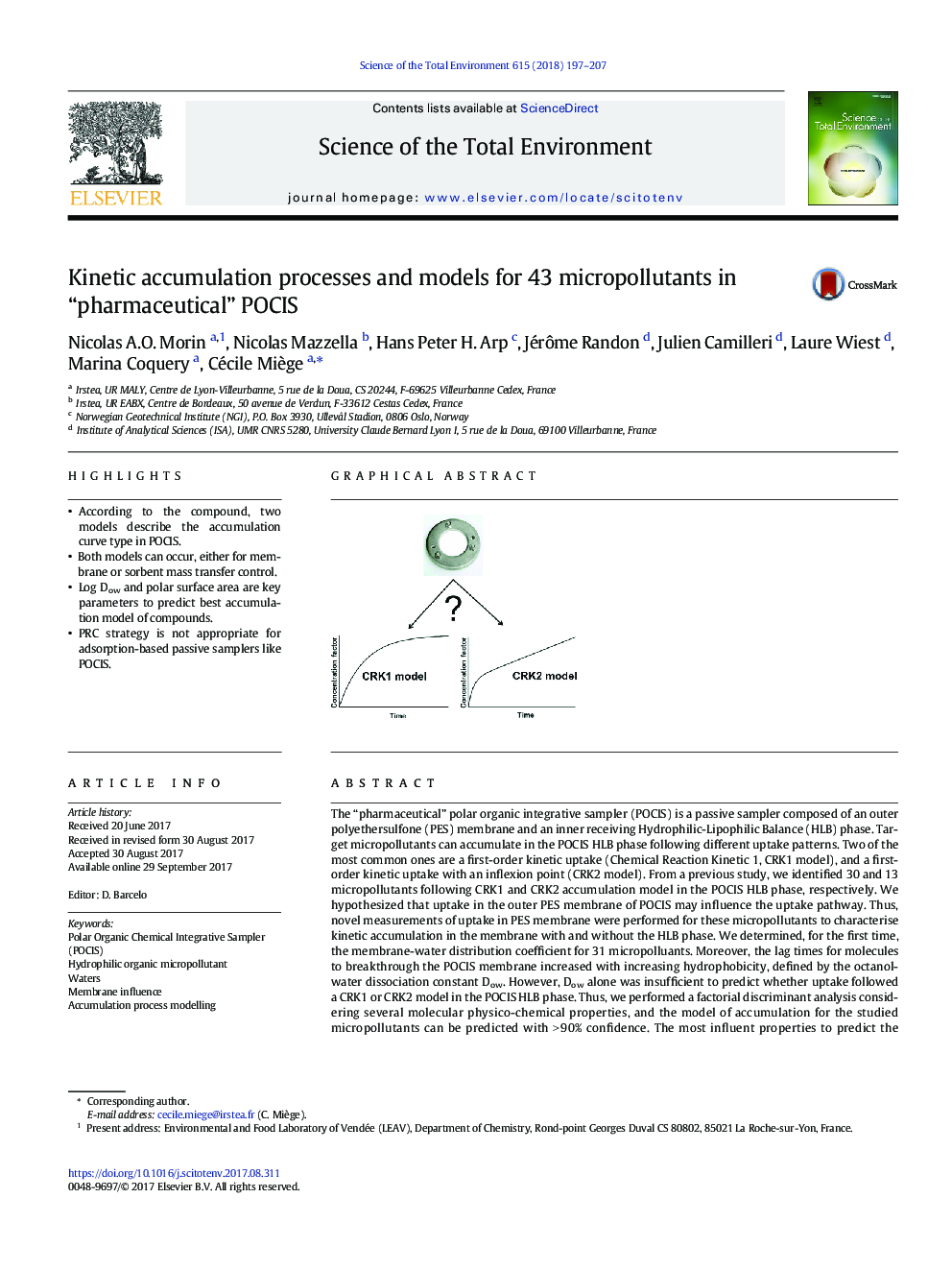| کد مقاله | کد نشریه | سال انتشار | مقاله انگلیسی | نسخه تمام متن |
|---|---|---|---|---|
| 5749774 | 1619689 | 2018 | 11 صفحه PDF | دانلود رایگان |

- According to the compound, two models describe the accumulation curve type in POCIS.
- Both models can occur, either for membrane or sorbent mass transfer control.
- Log Dow and polar surface area are key parameters to predict best accumulation model of compounds.
- PRC strategy is not appropriate for adsorption-based passive samplers like POCIS.
The “pharmaceutical” polar organic integrative sampler (POCIS) is a passive sampler composed of an outer polyethersulfone (PES) membrane and an inner receiving Hydrophilic-Lipophilic Balance (HLB) phase. Target micropollutants can accumulate in the POCIS HLB phase following different uptake patterns. Two of the most common ones are a first-order kinetic uptake (Chemical Reaction Kinetic 1, CRK1 model), and a first-order kinetic uptake with an inflexion point (CRK2 model). From a previous study, we identified 30 and 13 micropollutants following CRK1 and CRK2 accumulation model in the POCIS HLB phase, respectively. We hypothesized that uptake in the outer PES membrane of POCIS may influence the uptake pathway. Thus, novel measurements of uptake in PES membrane were performed for these micropollutants to characterise kinetic accumulation in the membrane with and without the HLB phase. We determined, for the first time, the membrane-water distribution coefficient for 31 micropolluants. Moreover, the lag times for molecules to breakthrough the POCIS membrane increased with increasing hydrophobicity, defined by the octanol-water dissociation constant Dow. However, Dow alone was insufficient to predict whether uptake followed a CRK1 or CRK2 model in the POCIS HLB phase. Thus, we performed a factorial discriminant analysis considering several molecular physico-chemical properties, and the model of accumulation for the studied micropollutants can be predicted with > 90% confidence. The most influent properties to predict the accumulation model were the log Dow and the polar surface area of the molecule (> 70% confidence with just these two properties). Molecules exhibiting a CRK1 uptake model for the POCIS HLB phase tended to have log Dow > 2.5 and polar surface area < 50 Ǻ2.
76
Journal: Science of The Total Environment - Volume 615, 15 February 2018, Pages 197-207